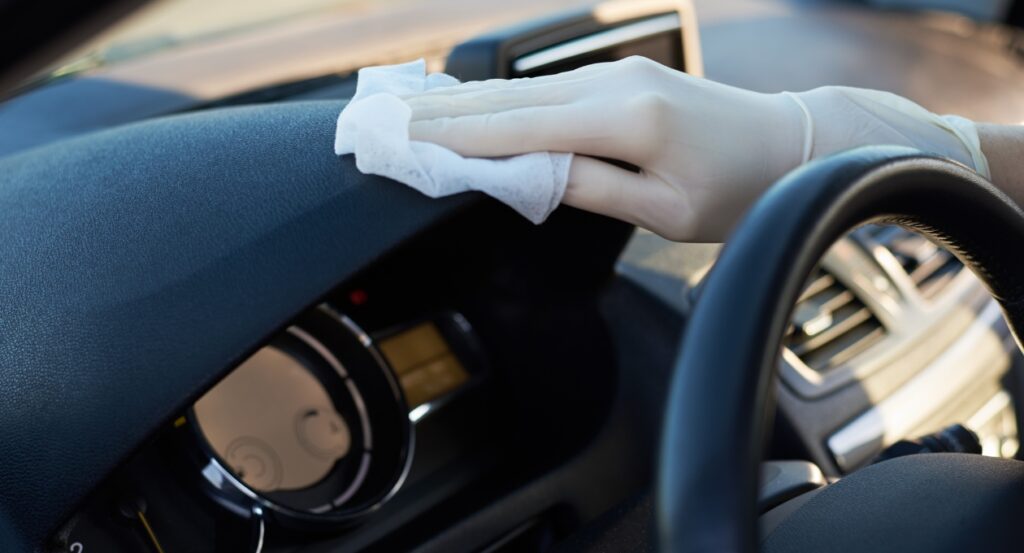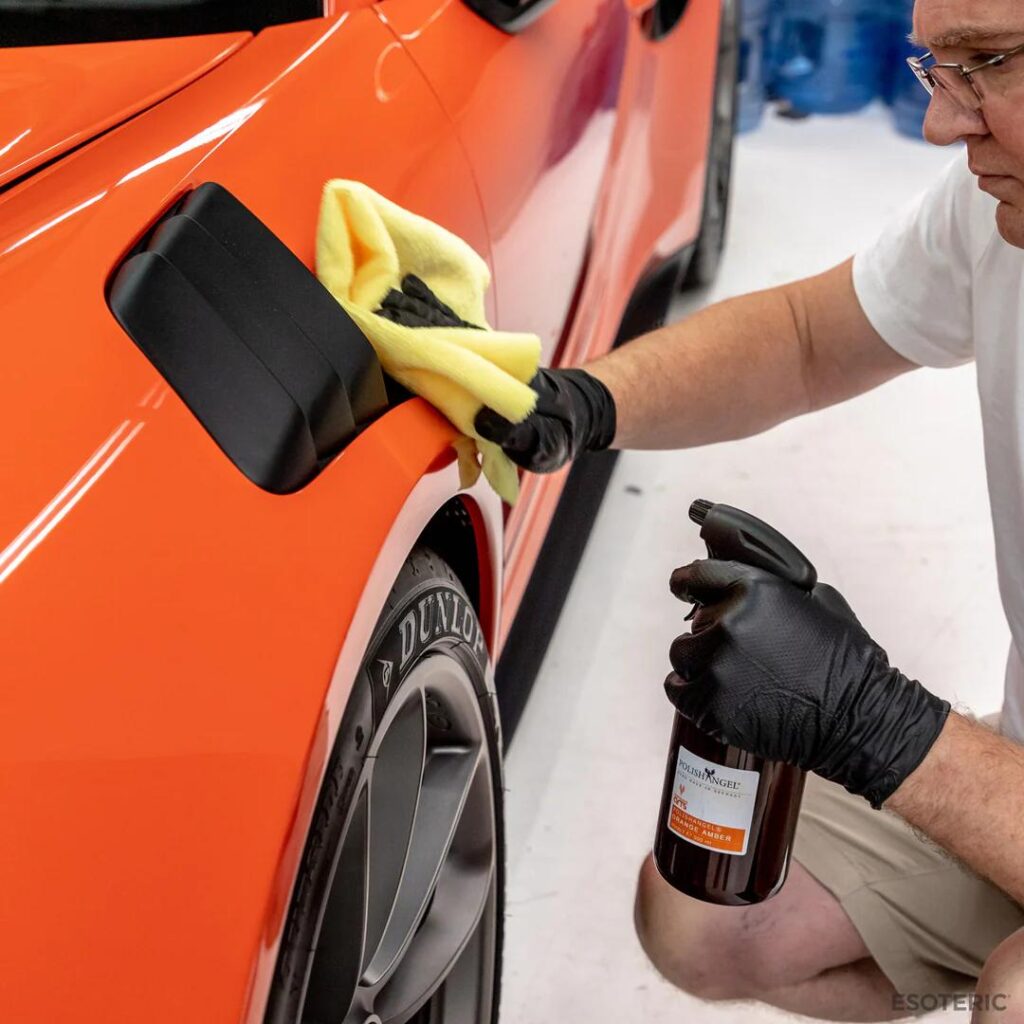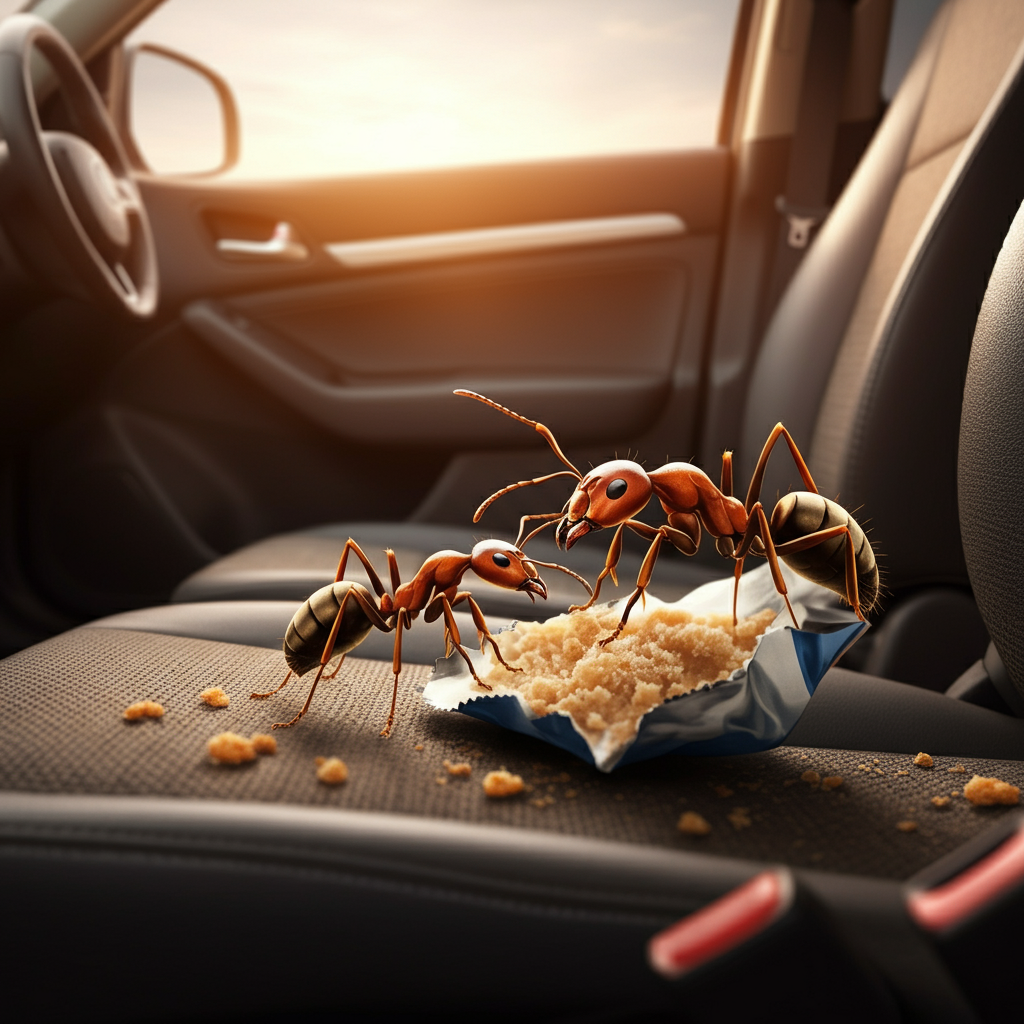As an Amazon Associate, I earn from qualifying purchases
Your car’s dashboard endures a lot—from dust and dirt to spilled coffee and sticky fingerprints. Beyond the obvious aesthetic benefits, keeping this central part of your vehicle clean plays a crucial role in maintaining your car’s overall condition and value.
A clean dashboard does more than just look good. It helps preserve the materials, prevents cracking and fading, and creates a healthier environment inside your vehicle. Plus, a well-maintained interior can significantly impact your car’s resale value down the line.
This comprehensive guide will walk you through everything you need to know about car dashboard cleaning tips, from the essential tools to step-by-step instructions for different materials. Whether you’re dealing with plastic, leather, or wood trim, you’ll learn the most effective methods to keep your dashboard looking like new.
Table of Contents
- 1 Why It’s Important to Clean Your Car’s Dashboard
- 2 How to Clean the Dashboard of a Car (Step-by-Step)
- 3 Best Tools and Products for Cleaning a Car’s Dashboard
- 4 How to Clean Specific Dashboard Materials
- 5 How Often Should You Clean Your Car’s Dashboard?
- 6 Frequently Asked Questions
- 7 Maintain Your Dashboard for Long-Term Vehicle Health
Why It’s Important to Clean Your Car’s Dashboard

Regular dashboard maintenance offers several compelling benefits that extend far beyond appearances. Understanding these advantages can help you establish a consistent cleaning routine that protects your investment.
Improved Air Quality
Your dashboard accumulates dust, pollen, and other airborne particles that can affect the air quality inside your vehicle. When you use your air conditioning or heating system, these contaminants can circulate throughout the cabin. Regular cleaning removes these particles, creating a healthier environment for you and your passengers.
Material Protection
Dashboard materials, whether plastic, leather, or wood, can deteriorate without proper care. UV rays from the sun cause fading and cracking, while accumulated dirt and oils can lead to permanent staining. Consistent cleaning and conditioning help preserve these materials, preventing costly replacements or repairs.
Vehicle Value Maintenance
A well-maintained interior significantly impacts your car’s resale value. Potential buyers often judge a vehicle’s overall condition based on how well the interior has been cared for. A clean, crack-free dashboard suggests the owner has taken good care of the entire vehicle.
Enhanced Driving Experience
A clean dashboard reduces glare and distractions while driving. Dust buildup on controls and displays can make them harder to read, while sticky surfaces can interfere with your interaction with buttons and switches. Regular cleaning ensures all dashboard elements function properly and remain easily accessible.
How to Clean the Dashboard of a Car (Step-by-Step)
Learning how to clean car interior surfaces properly requires the right approach and materials. Follow these detailed steps for the best results:
Step 1: Dusting with a Microfiber Cloth
Begin your car dashboard cleaning routine by removing loose dust and debris. Use a clean, dry microfiber cloth to gently wipe the entire dashboard surface. Start from the top and work your way down, ensuring you don’t push dust into vents or crevices.
For areas with heavy dust buildup, use a soft-bristled brush to loosen particles before wiping. Pay special attention to textured surfaces where dust tends to accumulate. The cleaning car dashboard with microfiber cloth technique is essential because microfiber traps particles rather than spreading them around.
Step 2: Using a Gentle Cleaning Solution
Select an appropriate cleaning solution based on your dashboard material. For most surfaces, a mild, pH-neutral cleaner works best. Spray the solution onto your microfiber cloth rather than directly onto the dashboard to avoid oversaturating electronic components.
Wipe the surface using circular motions, applying gentle pressure. Work in small sections to ensure thorough cleaning without allowing the solution to sit too long on any area. For stubborn stains, allow the cleaner to sit for a few minutes before wiping.
Step 3: Cleaning Vents, Buttons, and Switches
These intricate areas require special attention during your cleaning routine. Learning how to clean car vents effectively prevents dust from recirculating through your air system.
Use a small, soft-bristled brush or cotton swabs lightly dampened with cleaning solution to reach into vent slats and around buttons. For electronic displays and touchscreens, use only products specifically designed for these surfaces, or stick to distilled water on a microfiber cloth.
Be cautious around electrical components, ensuring no moisture enters switches or electronic interfaces. Work methodically, cleaning each control individually.
Step 4: Conditioning Leather or Plastic Surfaces
After cleaning, apply appropriate conditioning products to protect and restore your dashboard materials. For plastic surfaces, use a UV-protectant that prevents fading and cracking. Apply it sparingly with a clean cloth, buffing to an even finish.
When learning how to clean dashboard leather, remember that leather requires specialized products. Apply leather conditioner using circular motions, allowing it to penetrate the material. This step helps maintain flexibility and prevents cracking while restoring the leather’s natural appearance.
Step 5: Final Touch-up (Optional Wax or Polish)
For an extra level of protection and shine, consider applying a dashboard-specific wax or polish. These products provide additional UV protection and help repel dust and dirt.
Apply the product according to manufacturer instructions, typically using a clean microfiber cloth. Buff the surface to achieve an even finish without streaks or excess residue that could create glare while driving.
Best Tools and Products for Cleaning a Car’s Dashboard
Selecting the best dashboard cleaning products and tools makes a significant difference in your results and efficiency. Here’s what professional detailers recommend:
Essential Tools:
- High-quality microfiber cloths (at least three: one for dusting, one for cleaning, one for drying)
- Soft-bristled detailing brushes in various sizes
- Cotton swabs for intricate areas
- Spray bottles for diluted cleaning solutions
Cleaning Products:
Choose pH-neutral cleaners specifically formulated for automotive interiors. Avoid household cleaners that may contain harsh chemicals or leave residues. Look for products that don’t contain silicone, which can create a slippery surface and attract more dust over time.
For eco-conscious car owners, several environmentally friendly options provide excellent cleaning power without harmful chemicals. These products are safe for both your vehicle and the environment while delivering professional-level results.
Conditioning Products:
Invest in quality conditioners appropriate for your dashboard materials. UV-protectant sprays help prevent sun damage, while specialized leather conditioners maintain the suppleness and appearance of leather surfaces.
How to Clean Specific Dashboard Materials
Different dashboard materials require tailored approaches for optimal results. Understanding these differences ensures you don’t accidentally damage your vehicle’s interior.
Plastic Dashboard
Most modern vehicles feature plastic dashboards, making this the most common cleaning scenario. Plastic surfaces are generally durable but can show scratches and water spots if cleaned improperly.
Use a mild, automotive-specific cleaner and work in sections. Avoid abrasive materials that could scratch the surface. After cleaning, apply a UV-protectant to prevent fading and cracking from sun exposure.
For textured plastic surfaces, use a soft brush to work cleaner into the texture, followed by thorough wiping with a microfiber cloth.
Leather Dashboard
Luxury vehicles often feature leather dashboards that require special care. The key to successful leather dashboard maintenance is using products specifically designed for automotive leather.
Begin with a leather-specific cleaner applied to a damp cloth. Clean in sections, removing dirt and oils without oversaturating the leather. Follow immediately with a leather conditioner to restore moisture and flexibility.
Never use household leather cleaners or conditioners, as these may contain oils or chemicals unsuitable for automotive applications.
Wood Trim
Wood trim dashboards require the gentlest approach. Real wood needs different care than wood-look plastic, so identify your material before beginning.
For real wood, use cleaners specifically formulated for automotive wood trim. These products clean without damaging the finish or underlying wood. Apply wood conditioner periodically to maintain the wood’s appearance and prevent drying or cracking.
Wood-look plastic can typically be cleaned like regular plastic dashboard surfaces, but always test cleaning products in an inconspicuous area first.
Digital Displays and Screens
Modern vehicles feature increasingly sophisticated electronic displays that require careful cleaning. Turn off the vehicle and allow screens to cool before cleaning.
Use only distilled water or cleaners specifically designed for electronic displays. Apply the cleaner to your cloth, never directly to the screen. Use gentle, circular motions without applying pressure that could damage sensitive components.
How Often Should You Clean Your Car’s Dashboard?
Establishing a regular cleaning schedule helps maintain your dashboard’s appearance and prevents damage from accumulated dirt and grime.
Weekly Maintenance:
Perform light dusting with a microfiber cloth weekly, especially if you drive frequently or in dusty conditions. This prevents buildup that becomes harder to remove over time.
Monthly Deep Cleaning:
Conduct a thorough cleaning monthly, including all steps outlined in this guide. This frequency works well for most drivers and driving conditions.
Seasonal Conditioning:
Apply conditioning products seasonally, particularly before summer when UV exposure increases. This provides additional protection during the harshest months for dashboard materials.
Adjust for Your Conditions:
If you live in particularly dusty areas, have pets, or eat in your car frequently, you may need to clean more often. Conversely, garage-kept vehicles driven infrequently may require less frequent attention.
Frequently Asked Questions
How can I remove sticky residue from my dashboard?
For sticky residue removal, start with warm water and mild soap applied with a microfiber cloth. For stubborn residue, use a specialized automotive adhesive remover, testing it in an inconspicuous area first. Avoid using sharp objects that could scratch the surface.
Can I use household cleaners on my car’s dashboard?
It’s not recommended to use household cleaners on your car’s dashboard. These products often contain chemicals that can damage automotive materials or leave residues that attract more dirt. Stick to cleaners specifically formulated for automotive interiors.
Should I clean the dashboard with the car running or off?
Always clean your dashboard with the car turned off and cooled down. This prevents accidental activation of controls, allows electronic displays to cool, and ensures your safety while working around electrical components.
What’s the best way to clean a leather dashboard without damaging it?
Use only automotive leather cleaners and conditioners, applying them to your cloth rather than directly to the leather. Work in sections, cleaning and conditioning promptly to prevent the leather from drying out. Never use household leather products or excessive water.
How can I protect my dashboard from future dirt and stains?
Regular cleaning and conditioning provide the best protection. Consider using dashboard covers if your car sits in direct sunlight for extended periods. Keep eating to a minimum in your vehicle, and address spills immediately to prevent staining.
Maintain Your Dashboard for Long-Term Vehicle Health
Proper dashboard maintenance represents a small investment of time that pays significant dividends in vehicle preservation and driving comfort. By following these detailed DIY car dashboard cleaning steps regularly, you’ll protect your investment while enjoying a cleaner, healthier driving environment.
Remember that consistency matters more than perfection. A regular cleaning routine using appropriate products and techniques will keep your dashboard looking great and functioning properly for years to come. Start with the basic cleaning steps outlined here, then develop a routine that works with your schedule and driving habits.
For additional tips on how to maintain your car’s interior, be sure to check out this related content.
Your dashboard faces daily challenges from UV rays, temperature fluctuations, and everyday use. Give it the care it deserves, and it will continue to serve you well throughout your vehicle’s lifetime.
As an Amazon Associate, I earn from qualifying purchases


